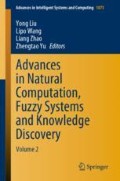Abstract
Phylogenetic networks are used in biology to describe reticulate or non-treelike evolution events. Thus, constructing phylogenetic networks is essential for the research on the evolution of species. IGNet is a web-based server for on-line construction of rooted phylogenetic networks from rooted phylogenetic trees based on an incompatible graph. Two methods,
 and BIMLR, were introduced and implemented in IGNet to help users construct rooted phylogenetic networks rapidly and efficiently. Besides the on-line computation service, the IGNet also provides downloadable Java programs of
and BIMLR, were introduced and implemented in IGNet to help users construct rooted phylogenetic networks rapidly and efficiently. Besides the on-line computation service, the IGNet also provides downloadable Java programs of
 and BIMLR for off-line construction of rooted phylogenetic networks. IGNet is availability from http://bioinformatics.imu.edu.cn.
and BIMLR for off-line construction of rooted phylogenetic networks. IGNet is availability from http://bioinformatics.imu.edu.cn.
Access this chapter
Tax calculation will be finalised at checkout
Purchases are for personal use only
References
Bandelt, H.J., Forster, P., Röhl, A.: Median-joining networks for inferring intraspecific phylogenies. Mol. Biol. Evol. 16(1), 37–48 (1999)
Bryant, D., Moulton, V.: Neighbor-net: an agglomerative method for the construction of phylogenetic networks. Mol. Biol. Evol. 21(2), 255–265 (2004)
Grünewald, S., Forslund, K., Dress, A., Moulton, V.: QNet: an agglomerative method for the construction of phylogenetic networks from weighted quartets. Mol. Biol. Evol. 24(2), 532–538 (2007)
Gunawan, A.D., Lu, B.L., Zhang, L.: A program for verification of phylogenetic network models. Bioinformatics 32(17), i503–i510 (2016)
Guo, L., Yu, J., Liang, T., Zou, Q.: MIR-isomiREXP: a web-server for the analysis of expression of miRNA at the miRNA/isomiR levels. Sci. Rep. 6, 23700 (2016)
Huson, D.H., Bryant, D.: Application of phylogenetic networks in evolutionary studies. Mol. Biol. Evol. 23(2), 254–67 (2006)
Huson, D.H., Dezulian, T., Klöpper, T., Steel, M.A.: Phylogenetic super-networks from partial trees. IEEE/ACM Trans. Comput. Biol. Bioinf. 1(4), 151–158 (2004)
Huson, D.H., Rupp, R.: Summarizing Multiple Gene Trees Using Cluster Networks. Springer, Heidelberg (2008)
Huson, D.H., Rupp, R., Berry, V., Gambette, P., Paul, C.: Computing galled networks from real data. Bioinformatics 25(12), i85–i93 (2009)
Huson, D.H., Rupp, R., Scornavacca, C.: Phylogenetic Networks: Concepts, Algorithms and Applications. Cambridge University Press, Cambridge (2011)
Huson, D.H., Scornavacca, C.: Dendroscope 3: an interactive tool for rooted phylogenetic trees and networks. Syst. Biol. 61(6), 1061–1067 (2012)
van Iersel, L., Kelk, S., Rupp, R., Huson, D.: Phylogenetic networks do not need to be complex: using fewer reticulations to represent conflicting clusters. Bioinformatics 26(12), i124–i131 (2010)
Semple, C.: Hybridization networks. Department of Mathematics and Statistics, University of Canterbury, Christchurch (2006)
Wang, J.: A metric on the space of partly reduced phylogenetic networks. BioMed Res. Int. 2016, 1–10 (2016)
Wang, J.: A survey of methods for constructing rooted phylogenetic networks. PLoS One 11(11), e0165834 (2016)
Wang, J., Guo, M., Liu, X., Liu, Y., Wang, C., Xing, L., Che, K.: LNETWORK: an efficient and effective method for constructing phylogenetic networks. Bioinformatics 29(18), 2269–2276 (2013)
Wang, J., Guo, M., Xing, L., Che, K., Liu, X., Wang, C.: BIMLR: a method for constructing rooted phylogenetic networks from rooted phylogenetic trees. Gene 527(1), 344–351 (2013)
Xu, Y., Guo, M., Liu, X., Wang, C., Liu, Y., Liu, G.: Identify bilayer modules via pseudo-3D clustering: applications to miRNA-gene bilayer networks. Nucleic Acids Res. 44(20), e152 (2016)
Xu, Y., Wang, Y., Luo, J., Zhao, W., Zhou, X.: Deep learning of the splicing (epi) genetic code reveals a novel candidate mechanism linking histone modifications to ESC fate decision. Nucleic Acids Res. 45(21), 12100–12112 (2017)
Zeng, X., Zhang, X., Zou, Q.: Integrative approaches for predicting microRNA function and prioritizing disease-related microRNA using biological interaction networks. Briefings Bioinf. 17(2), 193–203 (2016)
Acknowledgements
The work was supported by the National Natural Science Foundation of China (61661040, 61661039, 61571163, 61532014, 61671189); the National Key Research and Development Plan Task of China (Grant No. 2016YFC0901902).
Author information
Authors and Affiliations
Corresponding author
Editor information
Editors and Affiliations
Rights and permissions
Copyright information
© 2020 Springer Nature Switzerland AG
About this paper
Cite this paper
Wang, J., Guo, M. (2020). IGNet: Constructing Rooted Phylogenetic Networks Based on Incompatible Graphs. In: Liu, Y., Wang, L., Zhao, L., Yu, Z. (eds) Advances in Natural Computation, Fuzzy Systems and Knowledge Discovery. ICNC-FSKD 2019. Advances in Intelligent Systems and Computing, vol 1075. Springer, Cham. https://doi.org/10.1007/978-3-030-32591-6_97
Download citation
DOI: https://doi.org/10.1007/978-3-030-32591-6_97
Published:
Publisher Name: Springer, Cham
Print ISBN: 978-3-030-32590-9
Online ISBN: 978-3-030-32591-6
eBook Packages: Intelligent Technologies and RoboticsIntelligent Technologies and Robotics (R0)

